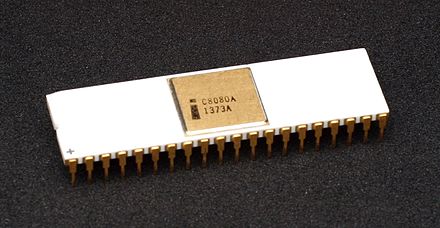
The Intel 8080 8-bit microprocessor was introduced publicly in April, 1974, and was an extended and enhanced variant of the earlier 8008 design. The chip had a retail price tag of “just” $360 at introduction, which soon was reduced to $3-5 in quantity. The 40 pin chip contains 6,000 transistors and runs at 2 MHz.
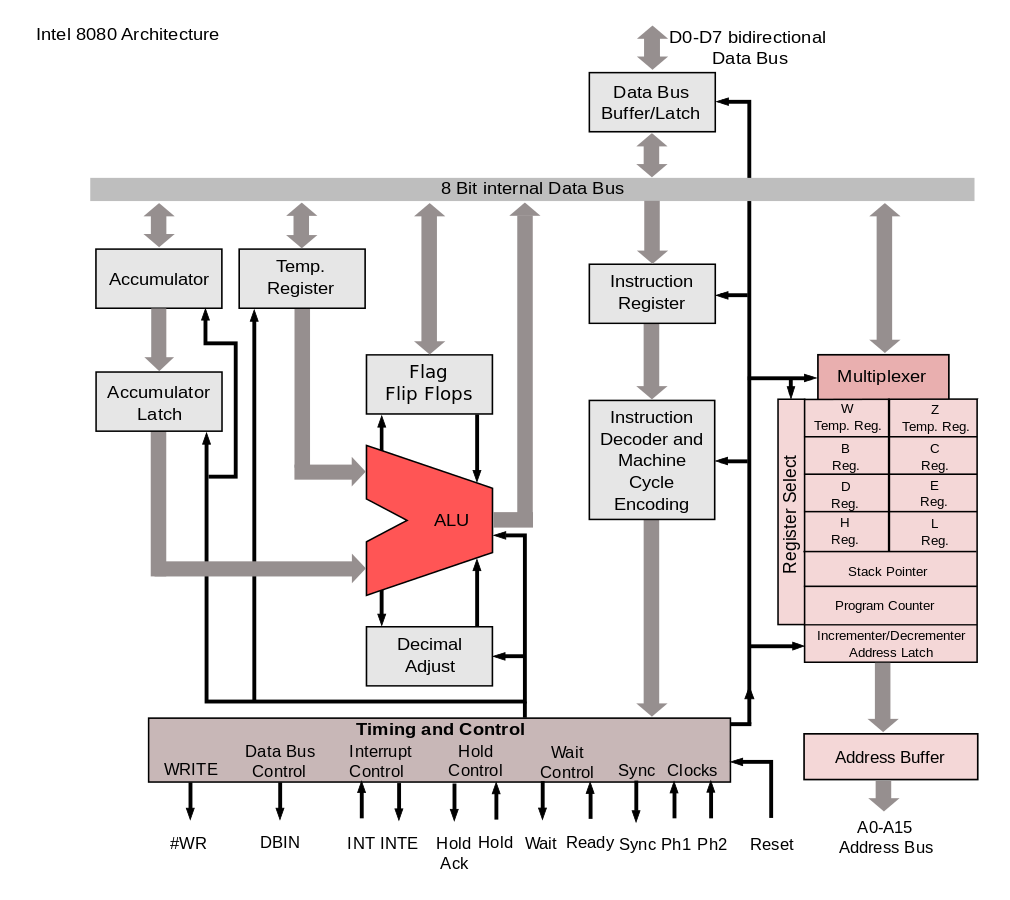
Intel 8080A microarchitecture – Wikimedia Commons
The 8080 needs at least two support chips to function in most applications, the i8224 clock generator/driver and the i8228 bus controller. A family of support chips were also available:
- 8238 – System controller and bus driver
- 8251 – Communication controller
- 8253 – Programmable interval timer
- 8255 – Programmable peripheral interface
- 8257 – DMA controller
- 8259 – Programmable interrupt controller
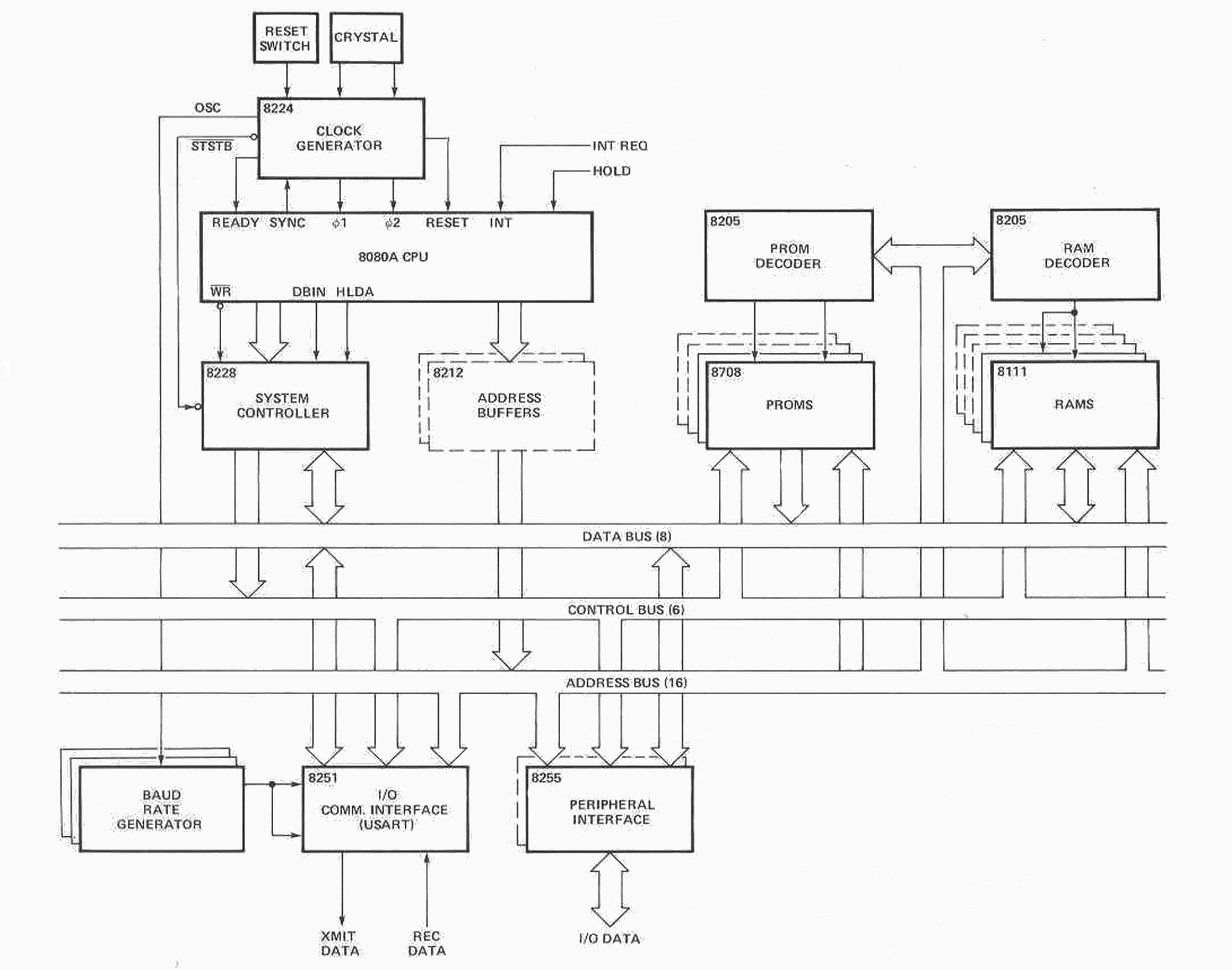
Intel 8080A System Development Kit block diagram from the Intel MCS80/SDK-80 Development Kit
Altair 8800 – the first “Personal Computer”
The first “personal computer”, a full microcomputer kit using the Intel 8080 was announced in January 1975 – the Altair 8800, for $375.00. That was barely more than the retail single unit cost of an 8080 chip. It included 256 bytes of 8 bit memory! Input/output was 16 toggle switches and 16 LED lights on the front panel. You could add memory or other I/O cards (like a serial card for connecting to a Teletype ASR 33 terminal) for added cost. The most expensive component of any computer at that time was memory. Now anyone could build their own computer!
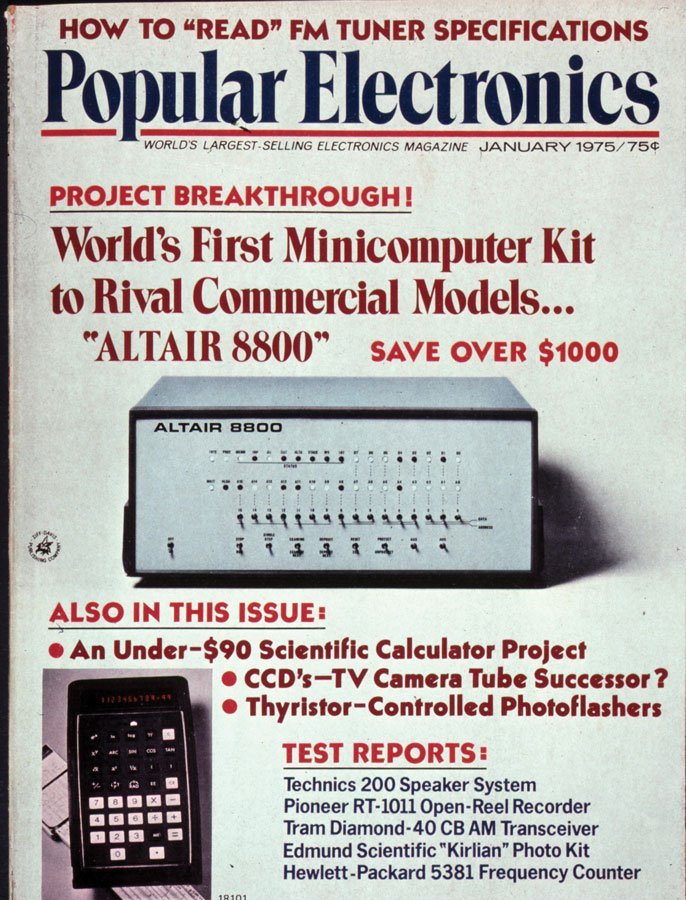
January 1975 Popular Electronics Magazine introducing the Altair 8800 “Minicomputer” Kit
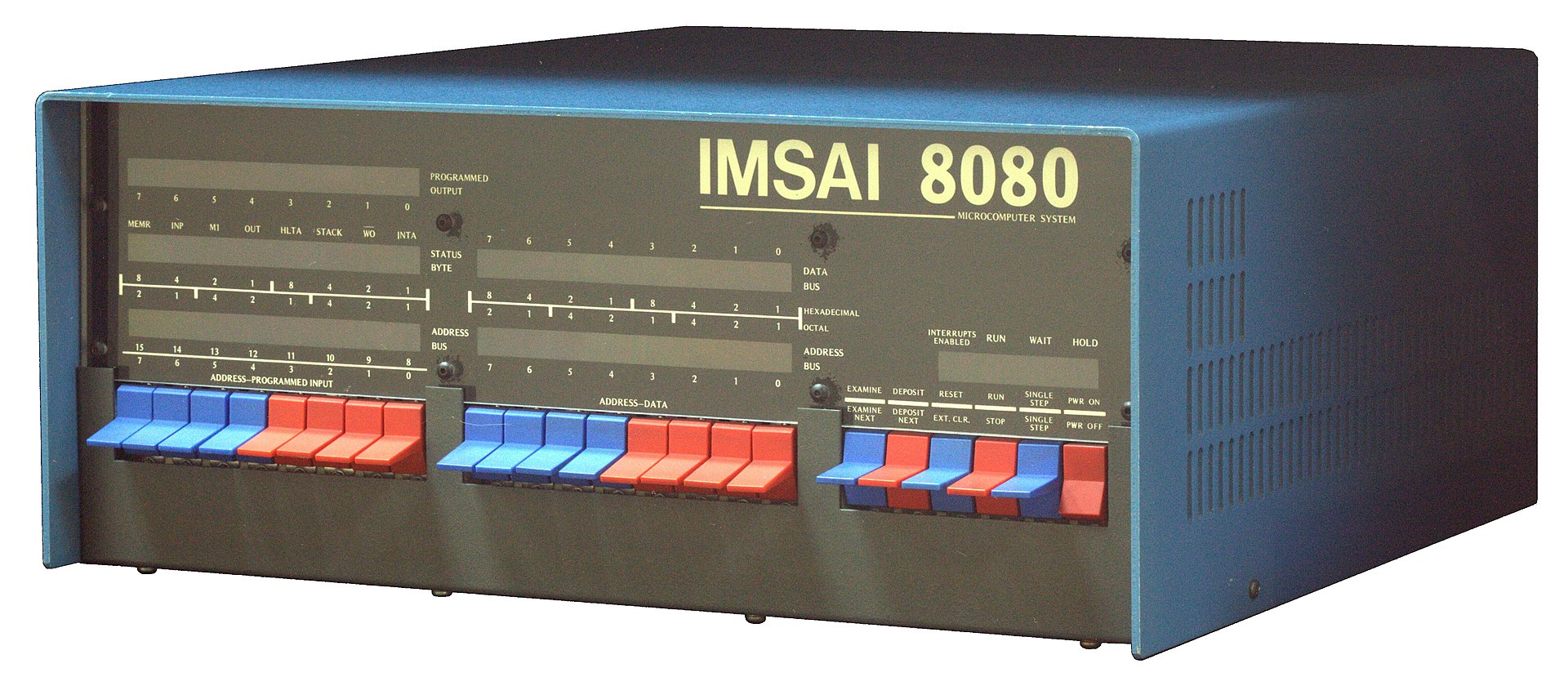
IMSAI 8080 Microcomputer System
The IMSAI 8080 was the “second” widely sold 8-bit personal micro-computer released in late 1975 after the MITS Altair 8800 . It was first based on the Intel 8080 microprocessor, and later the Intel 8085 and used the Altair 8800 backplane/bus design which became the S-100 standard. The IMSAI products were made in San Leandro, CA (SF Bay Area) by IMS Associates Inc. (IMSAI) and the 8080 was sold mostly in kit form. There eventually was a full line of IMSAI personal and “business” computers. However, when the IBM PC was released, the market for 8 bit business computers and 8-bit hobby computer kits dwindled quickly leaving only the home/gaming computers like Apple, Atari and Commodore in the running. IMS Associates Inc. went bankrupt in October 1979 and the assets were sold at auction.
I owned two IMSAI computers in the 1980’s which both ran CP/M 2.2. I used them for programming and word processing.


